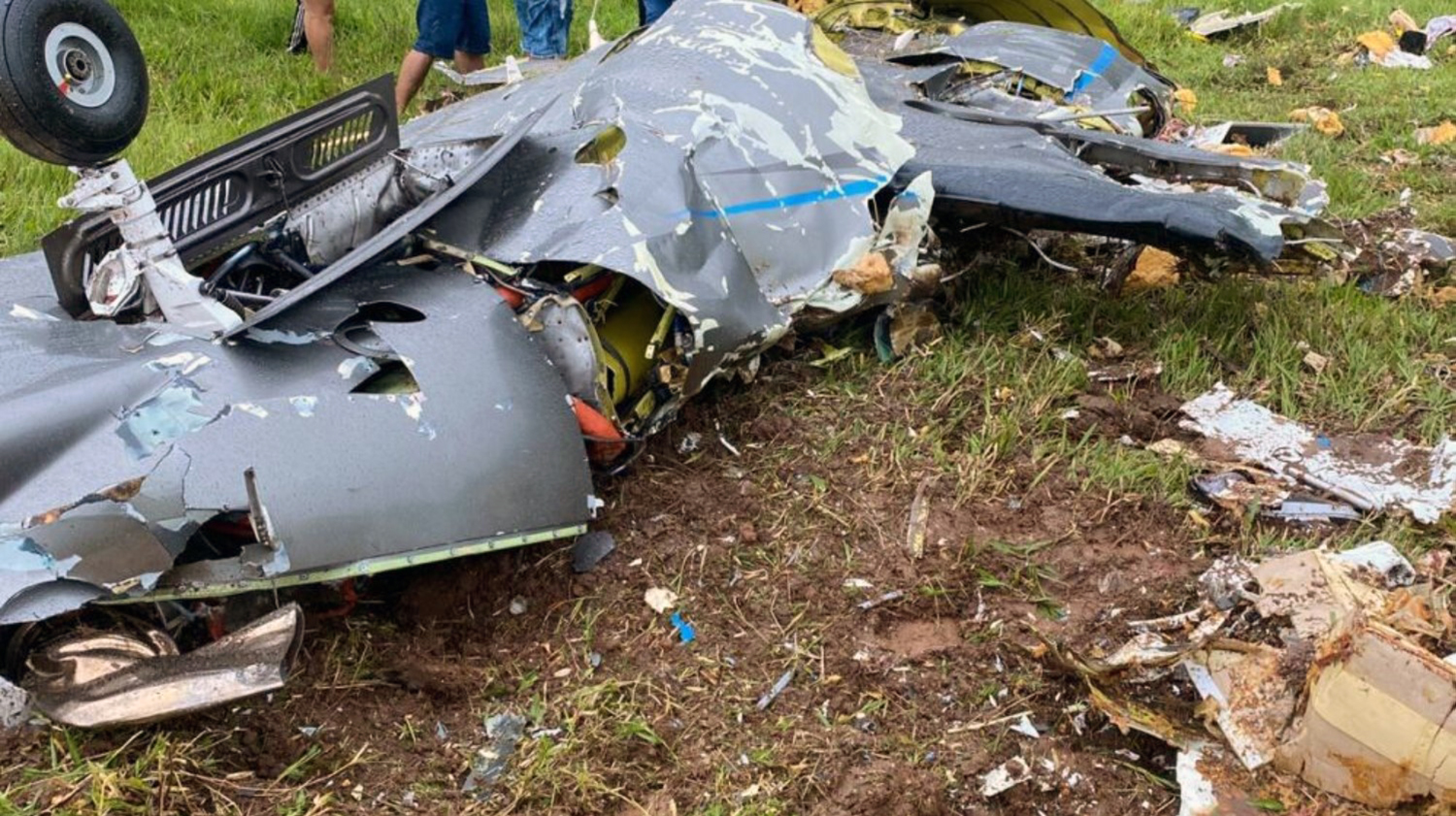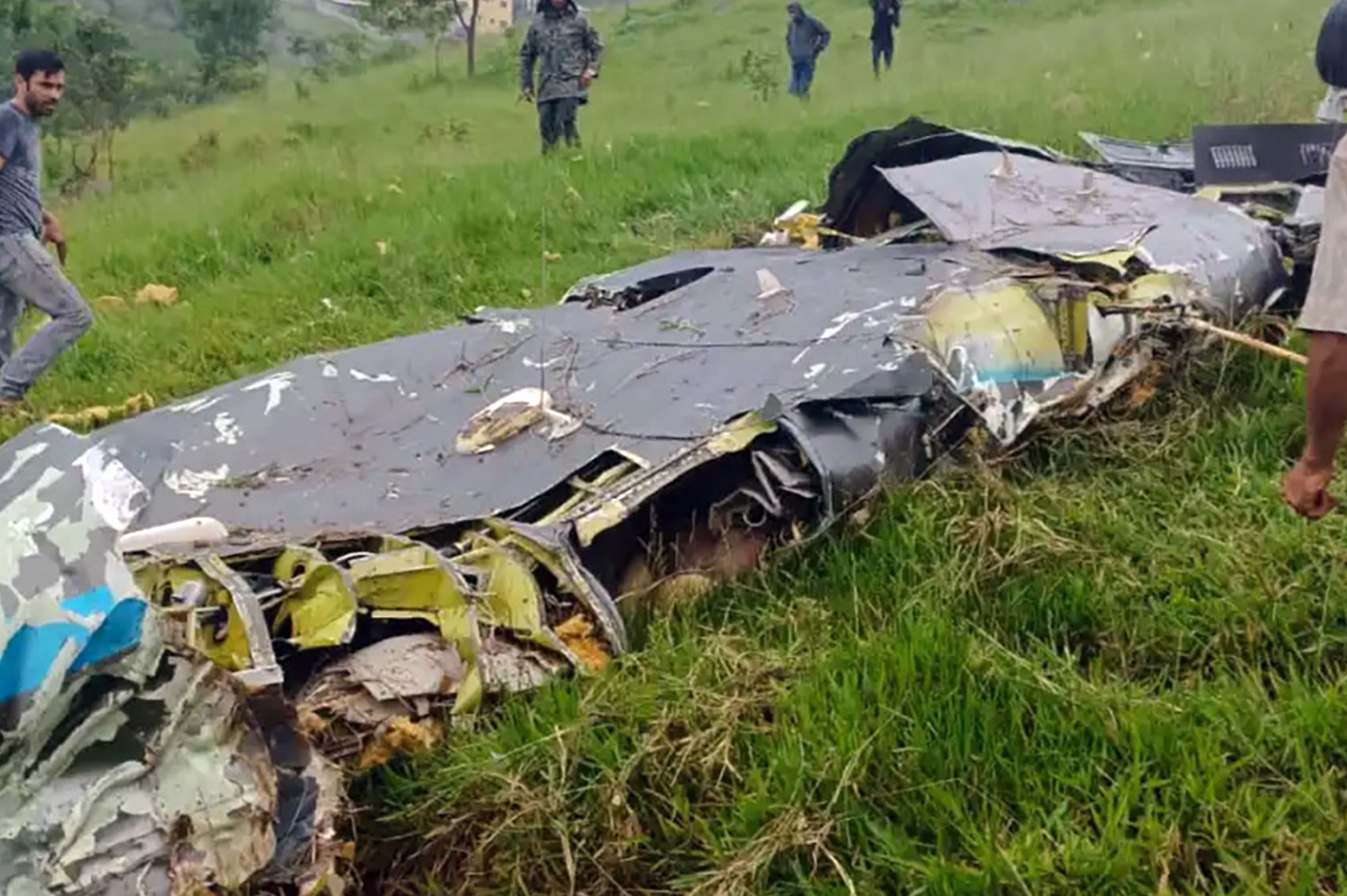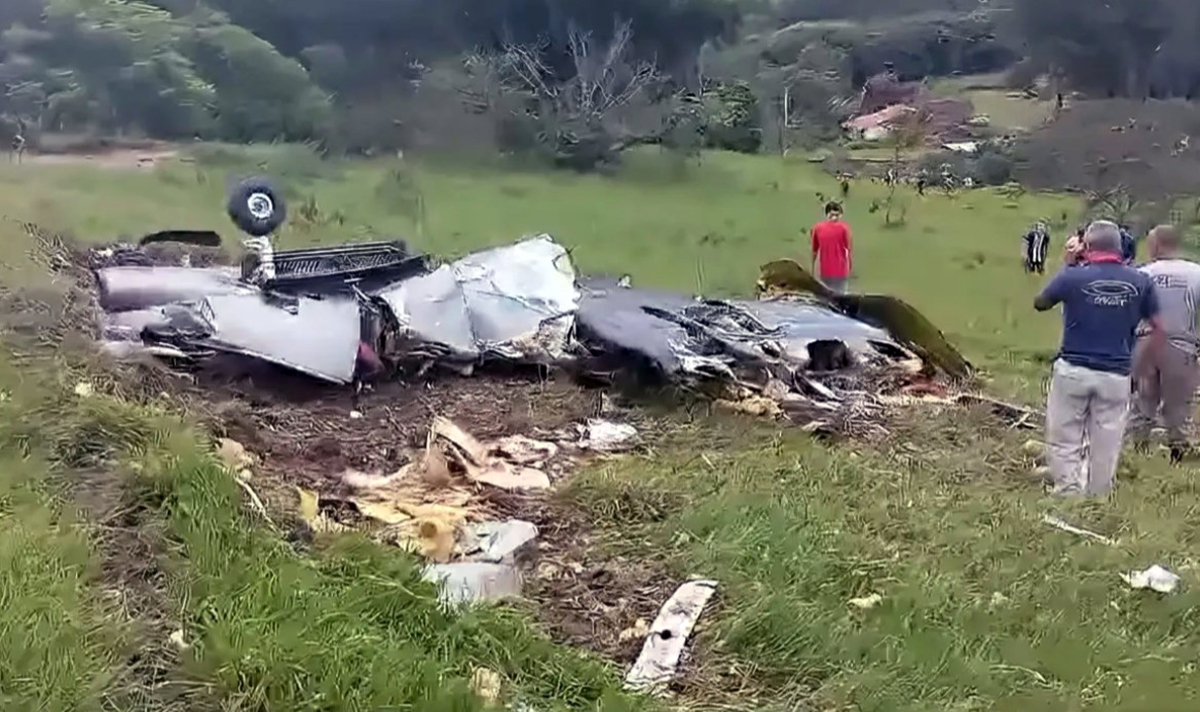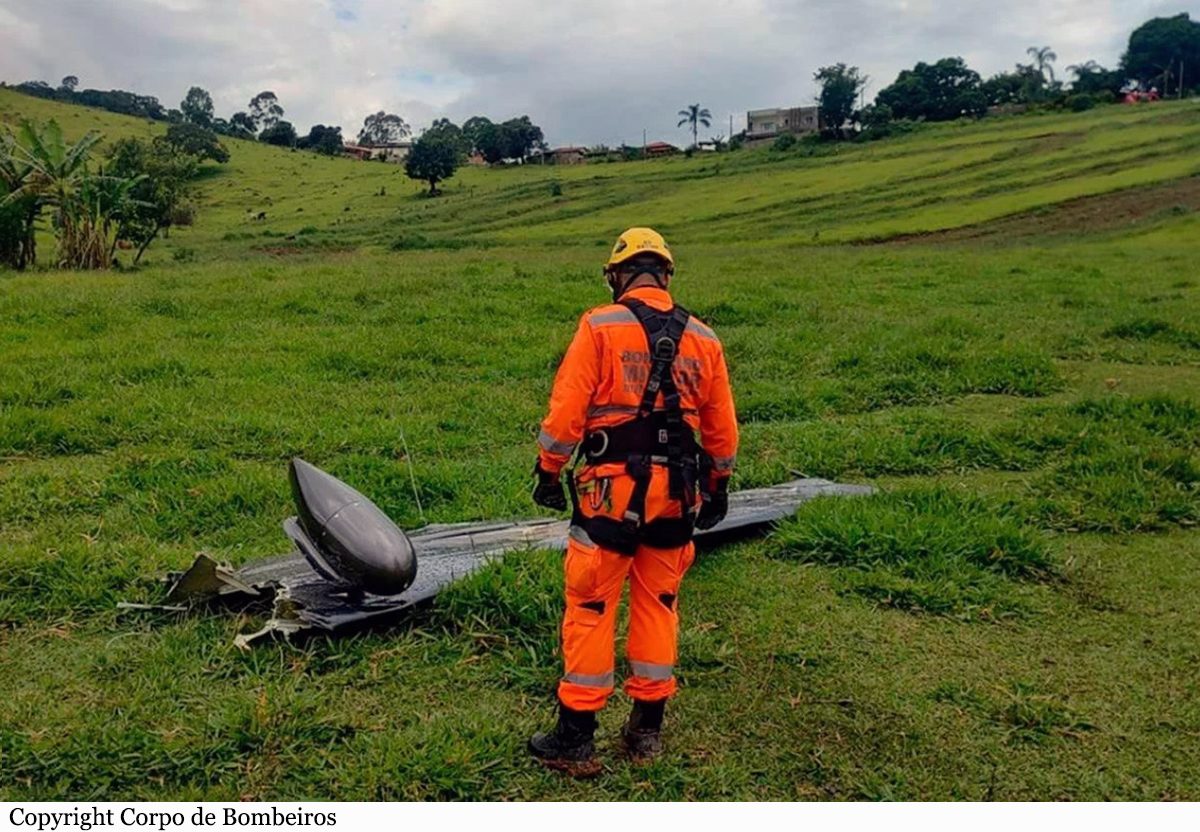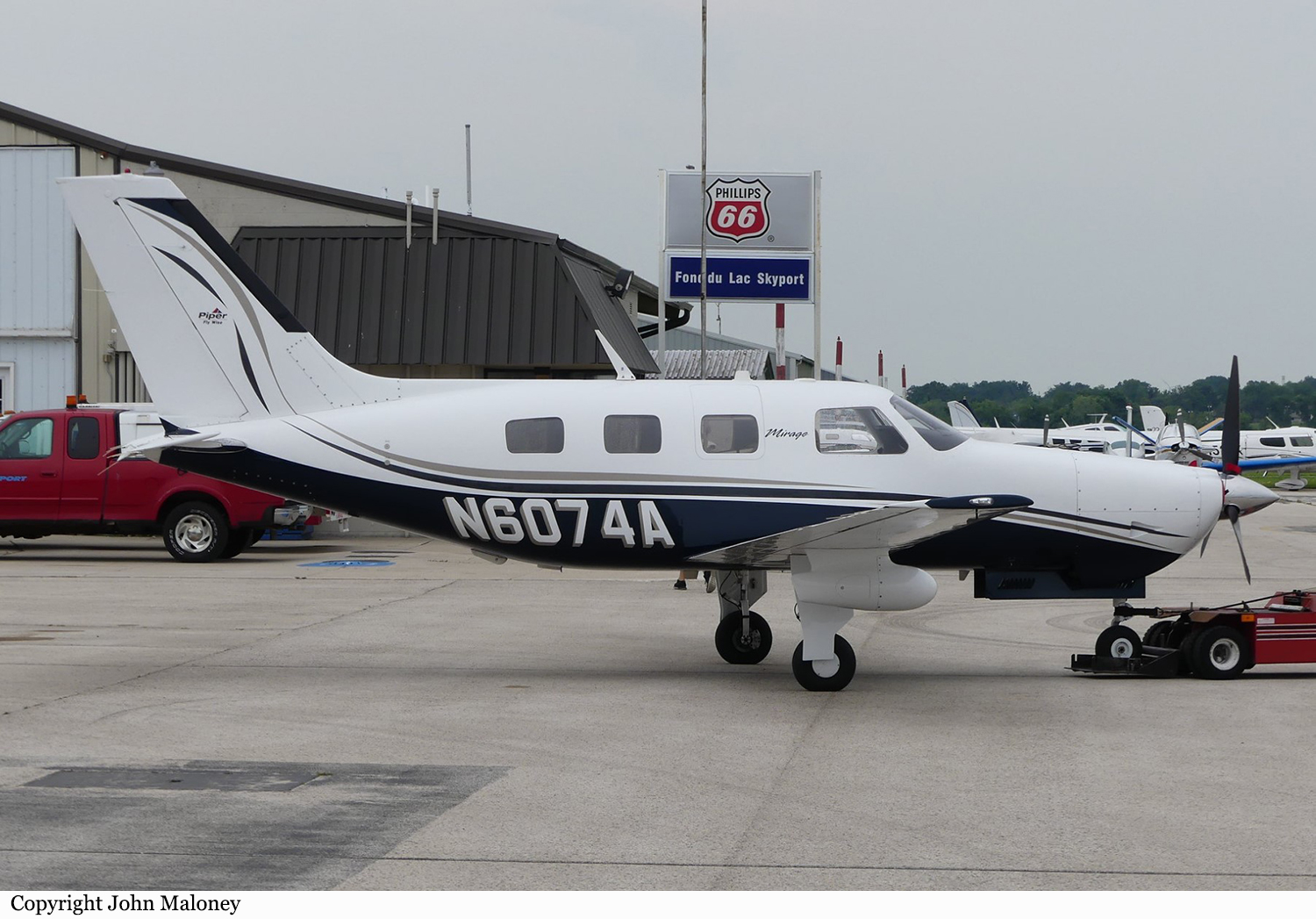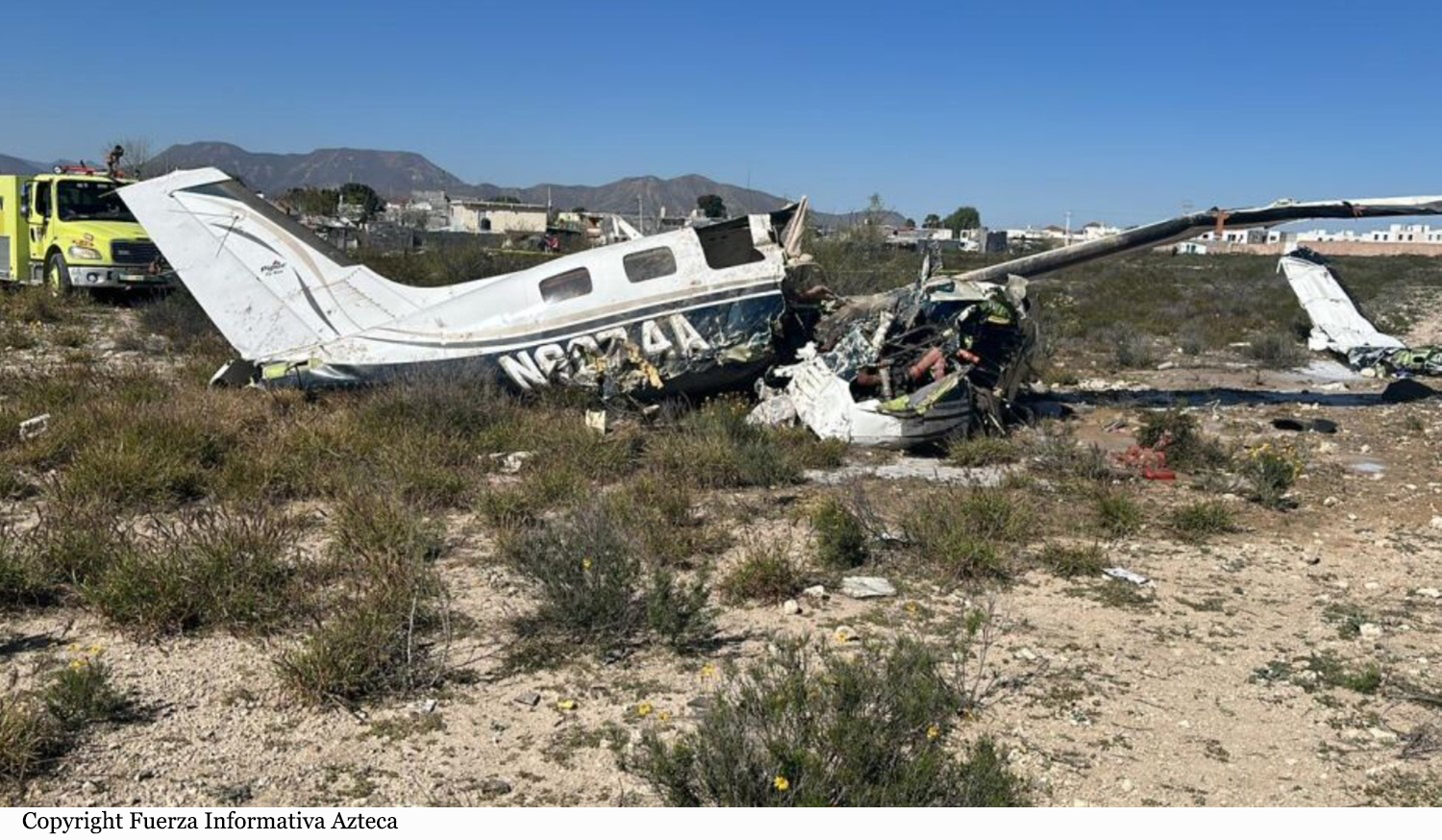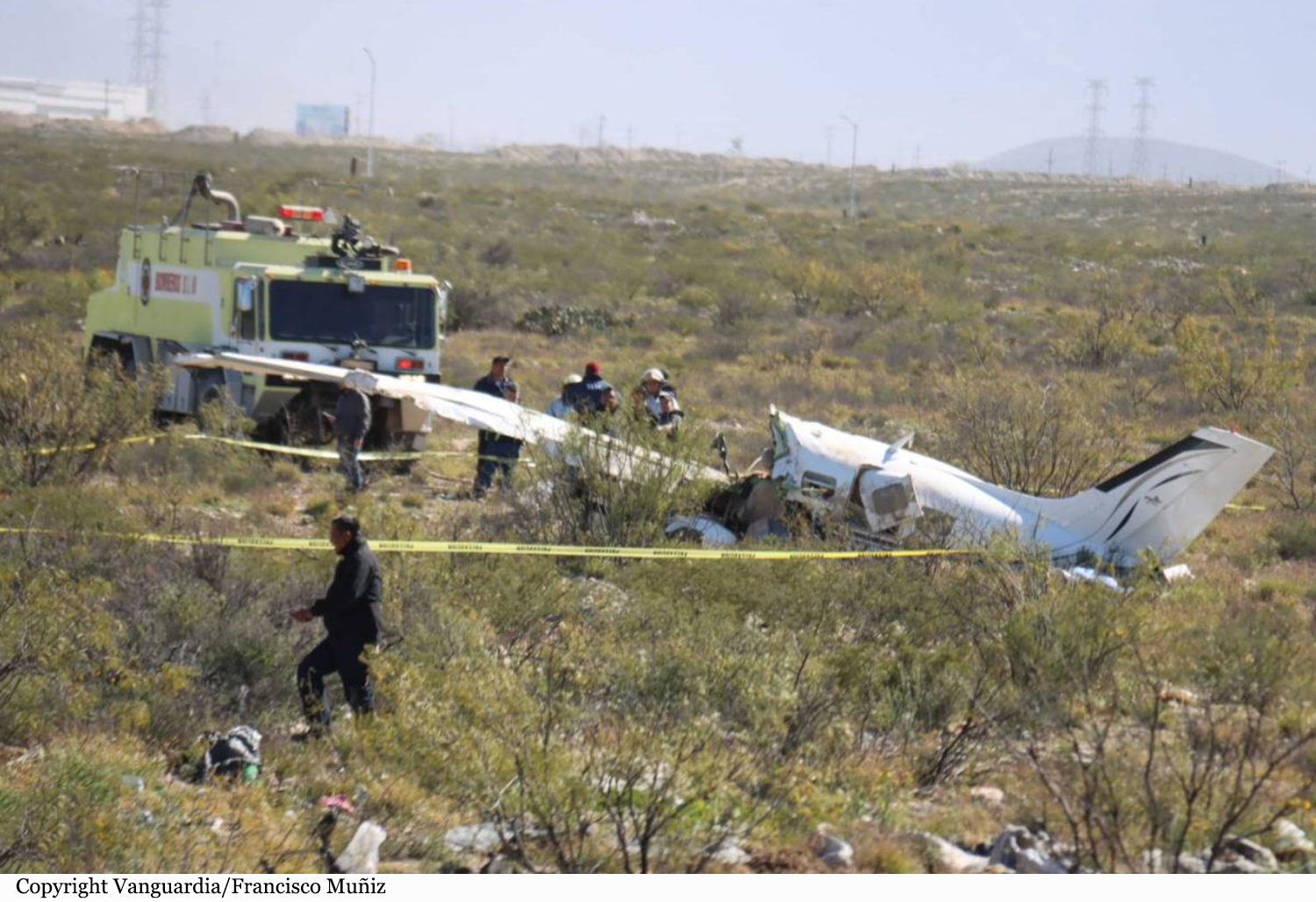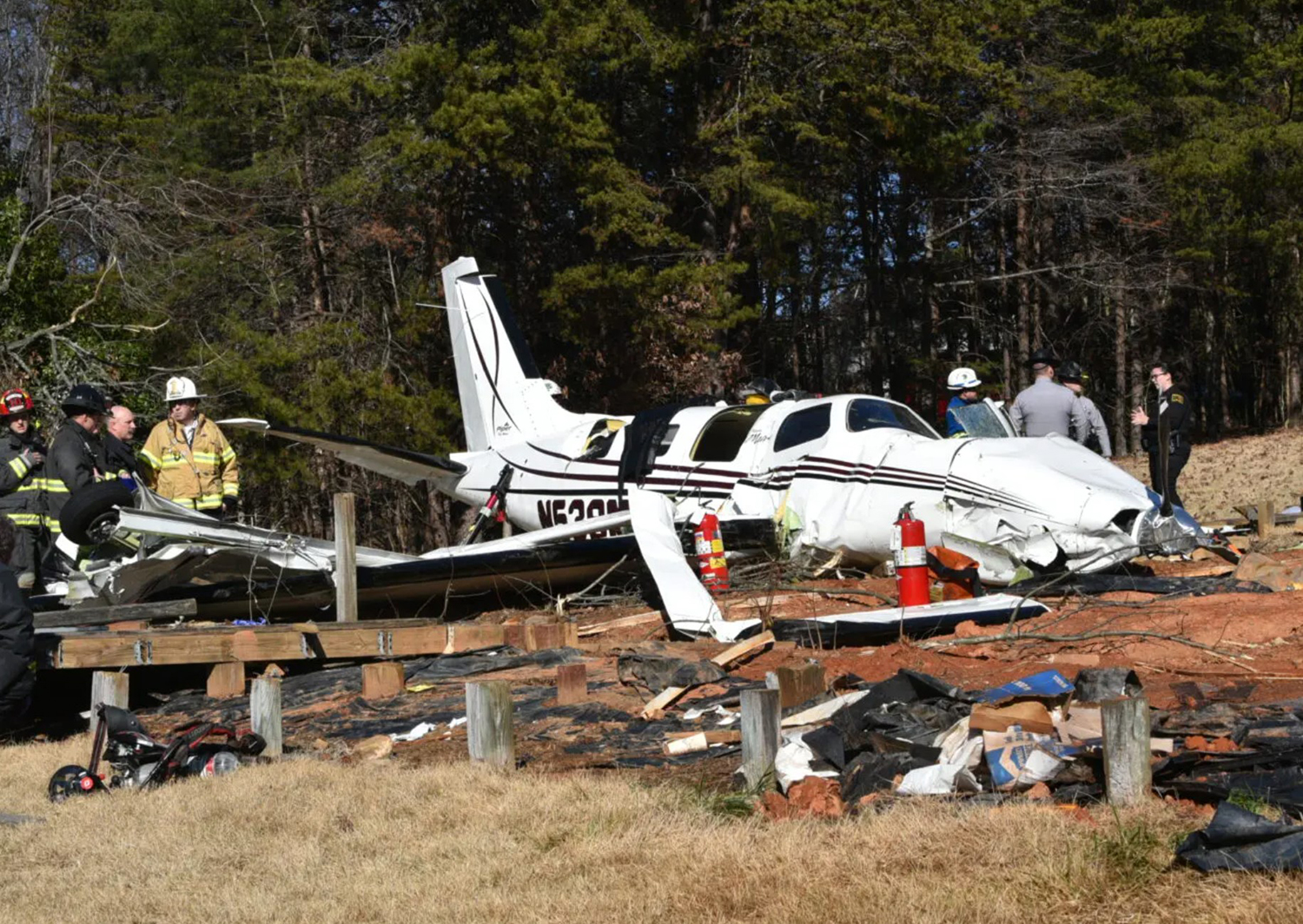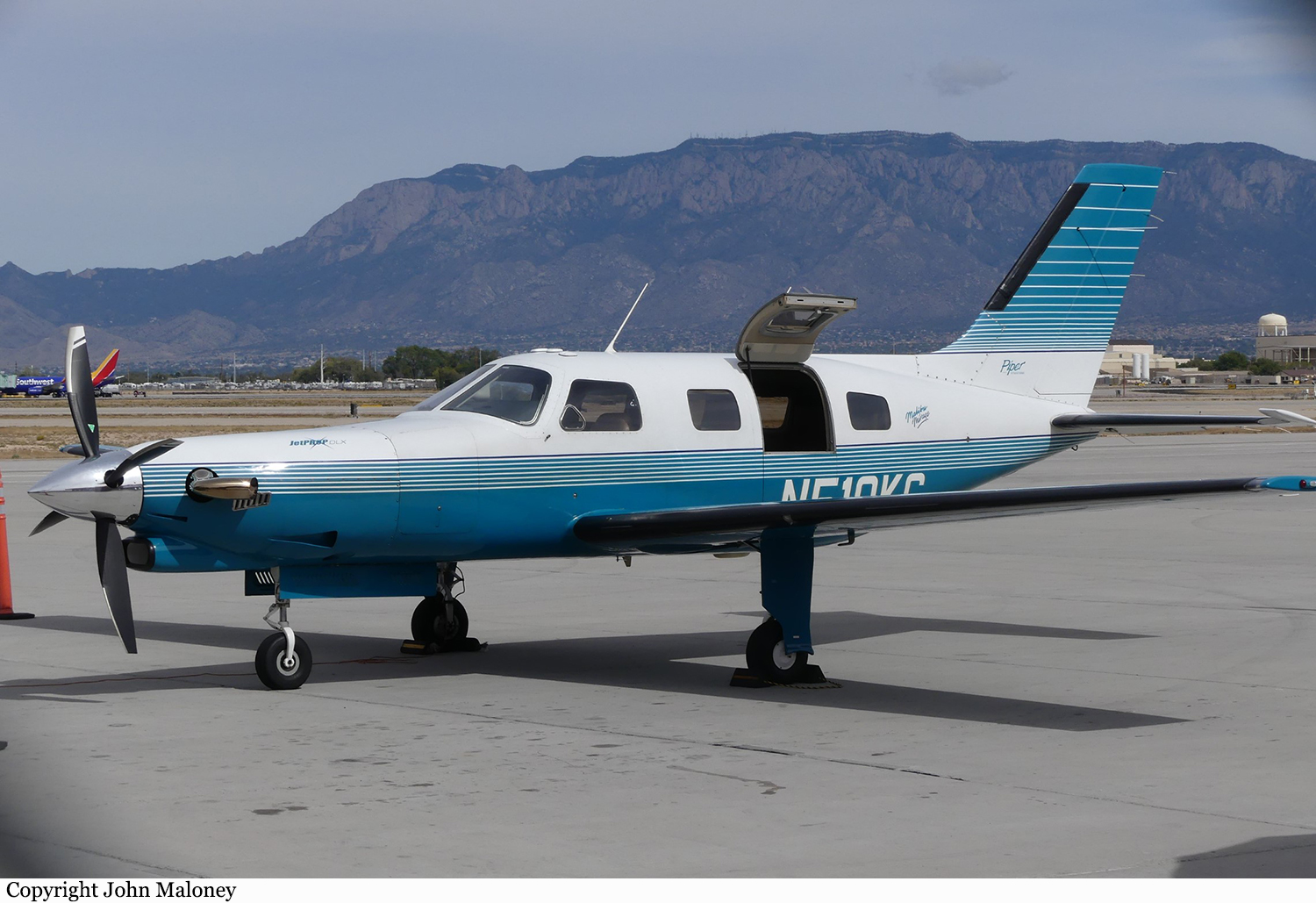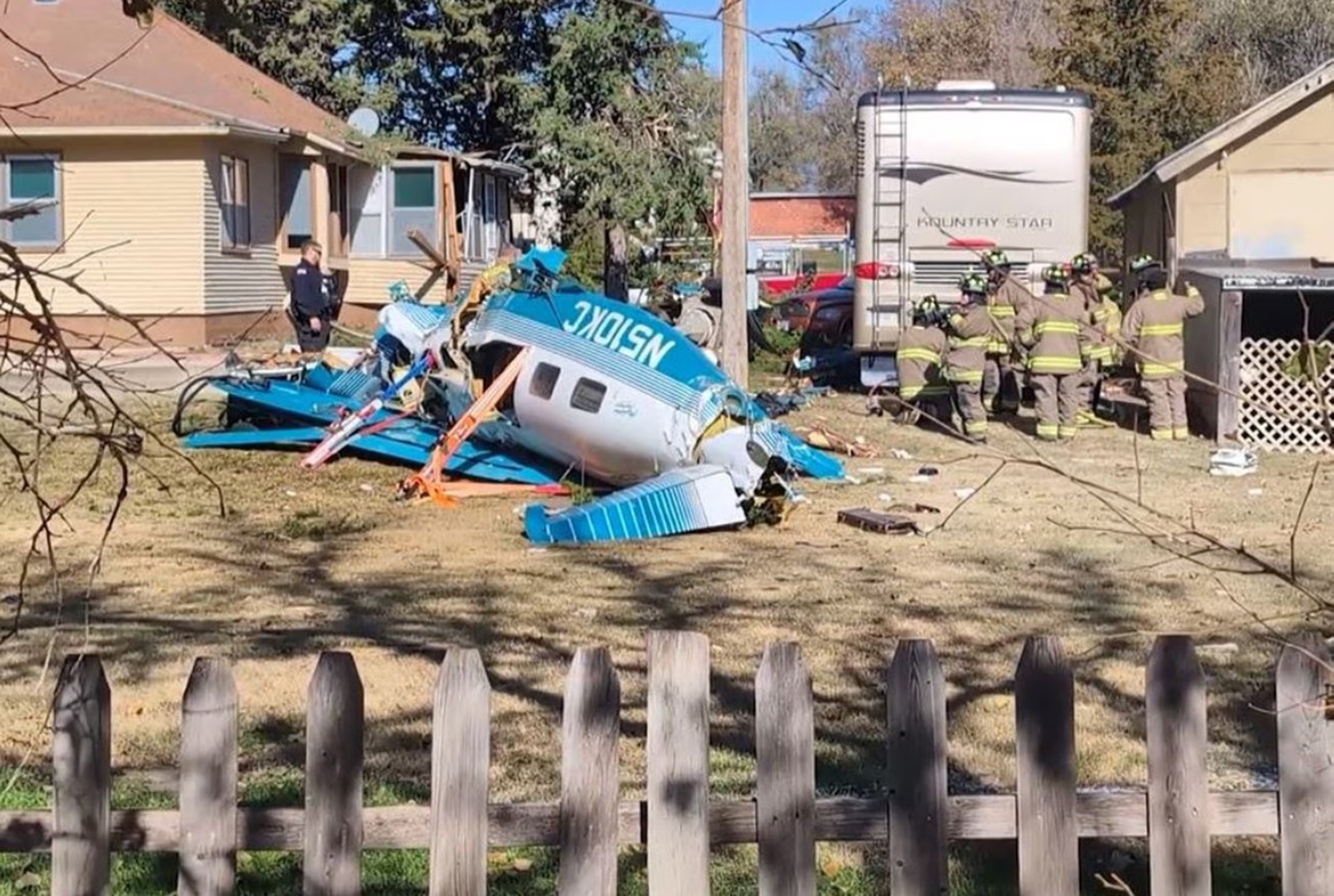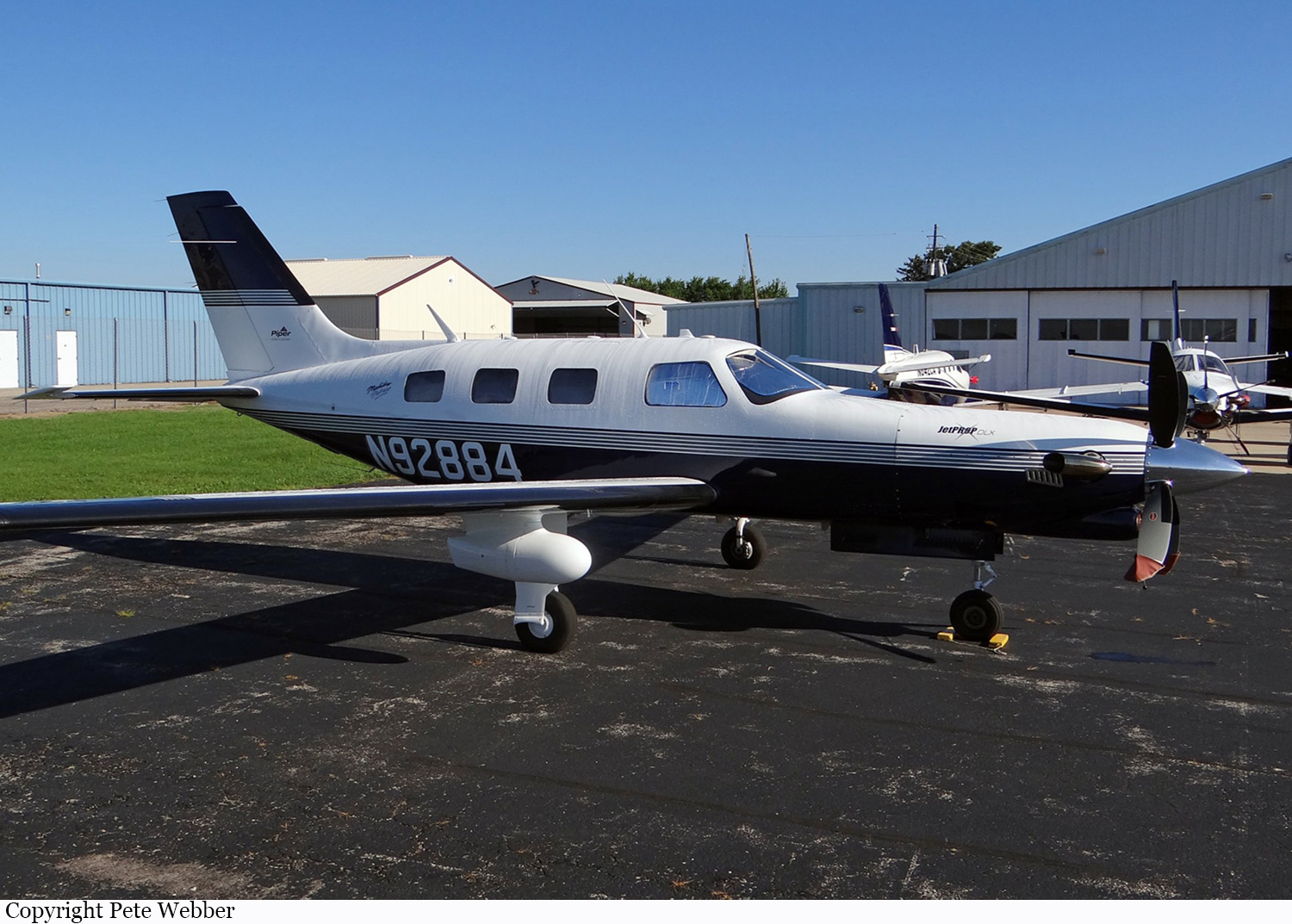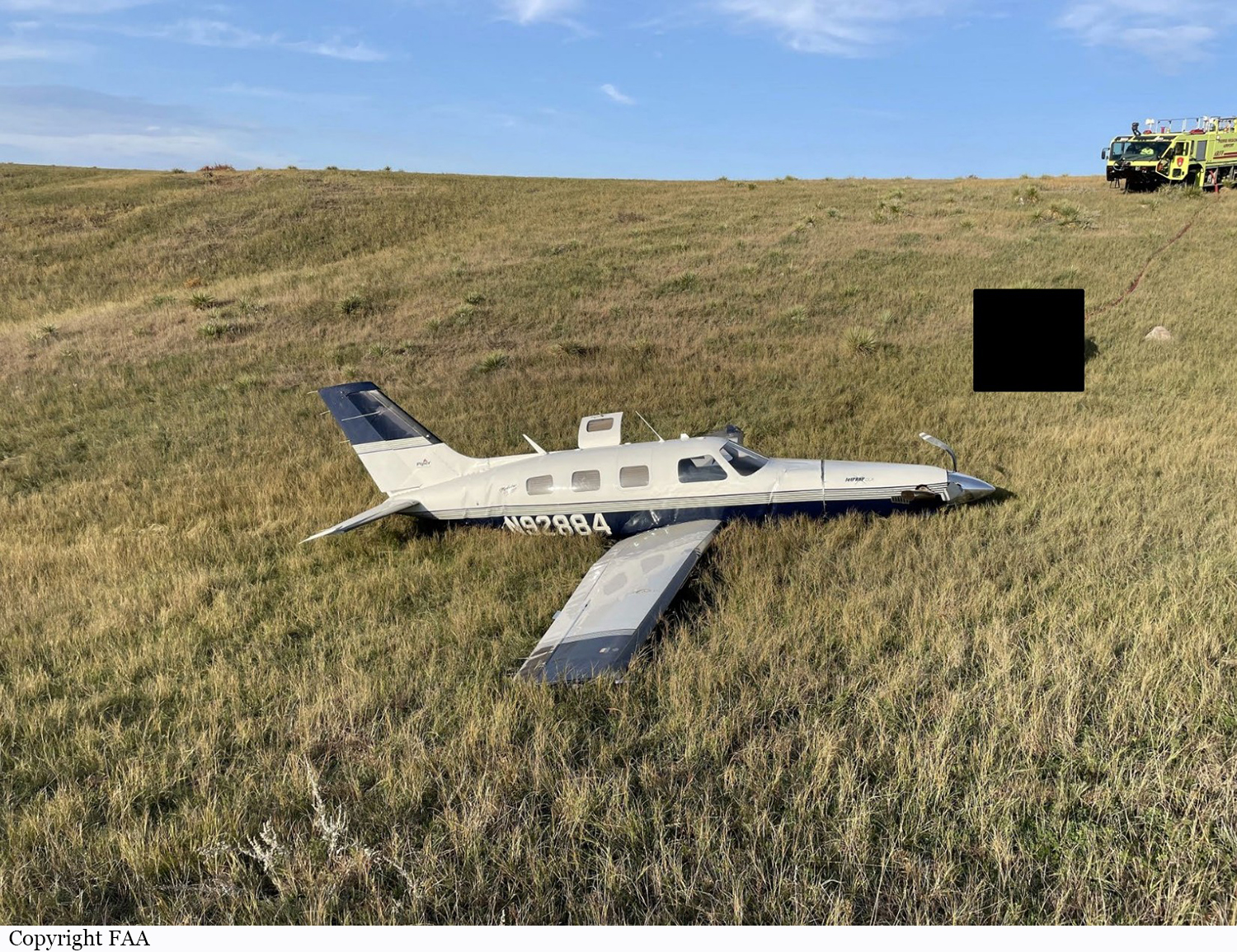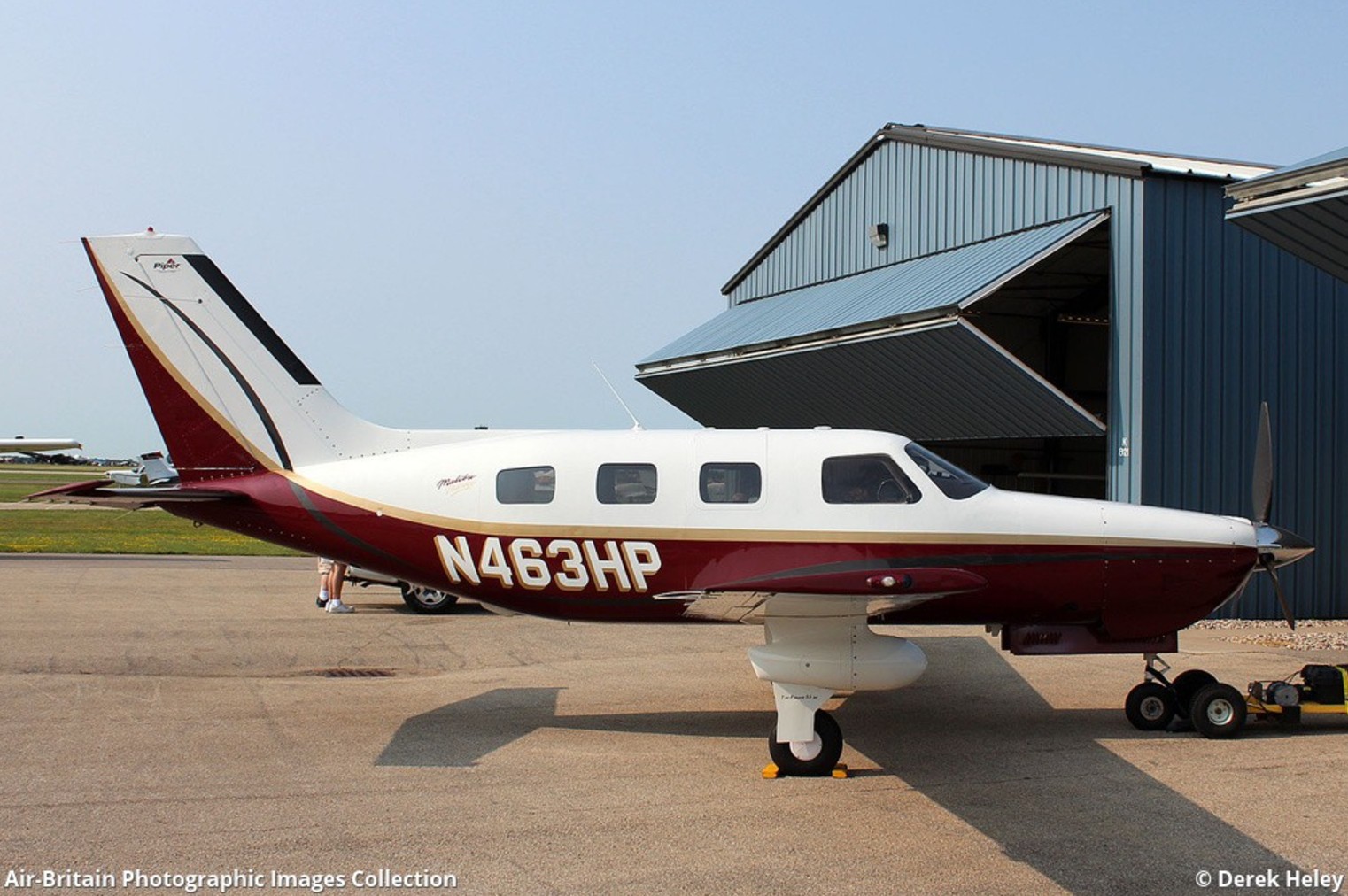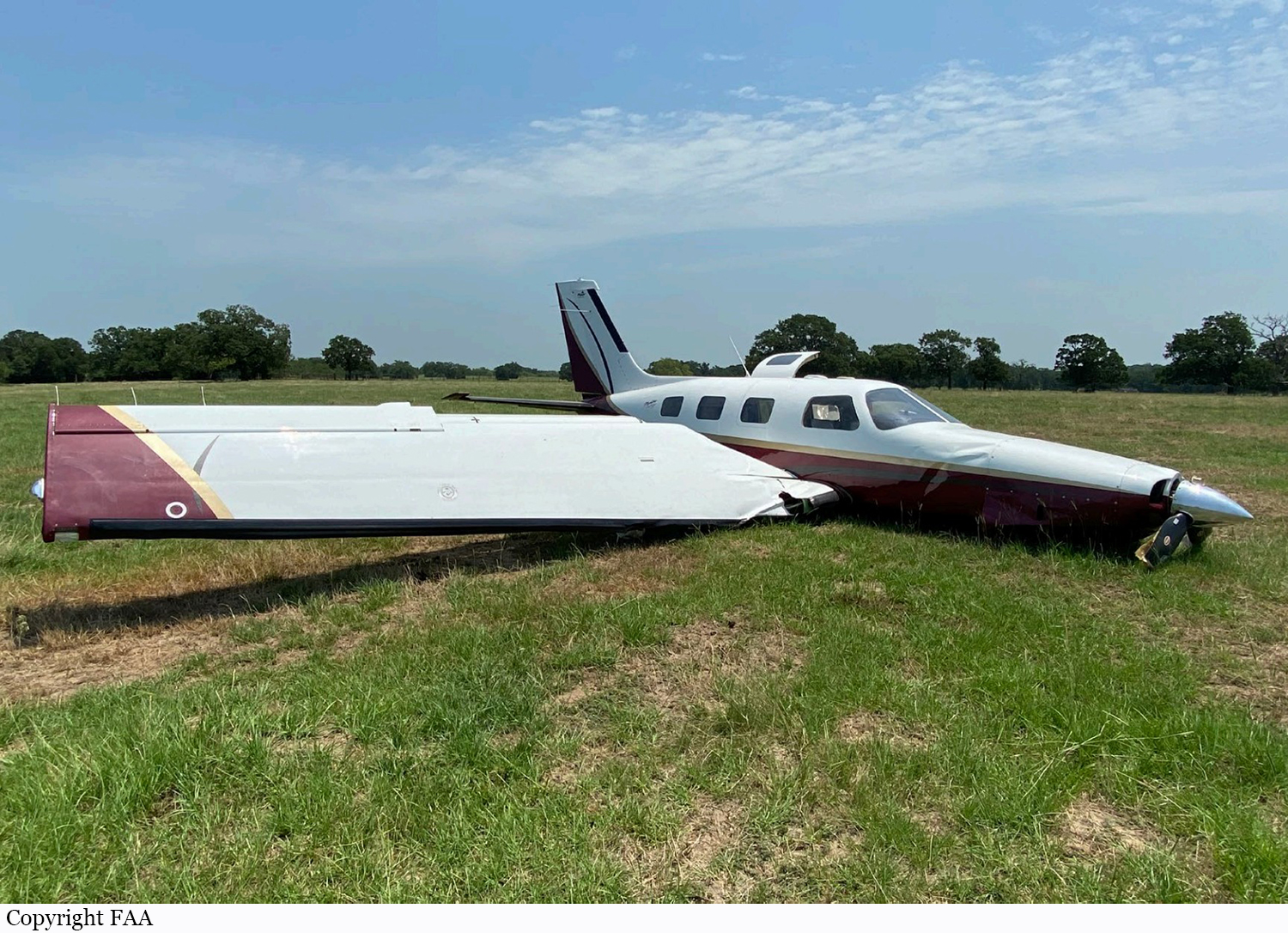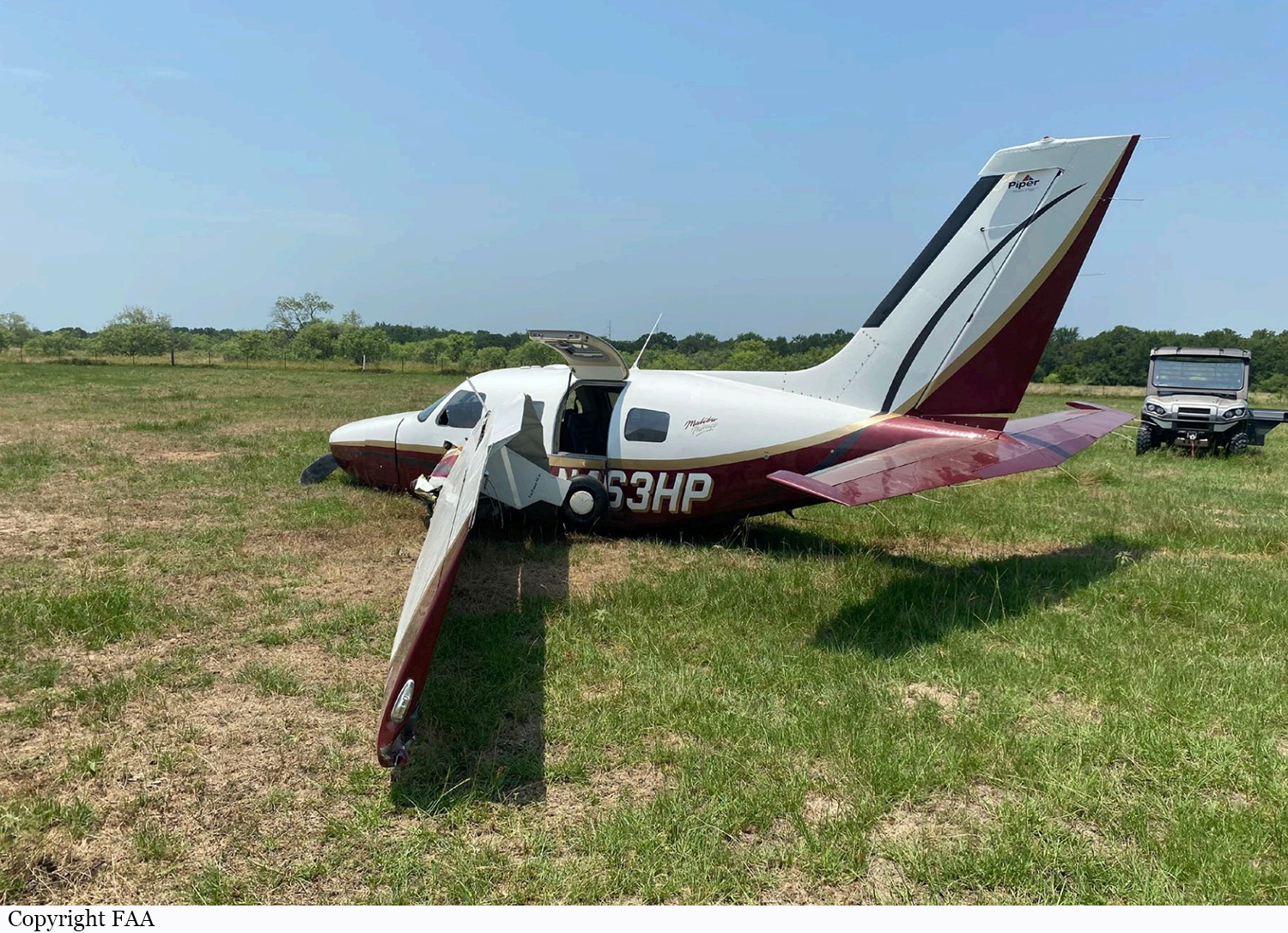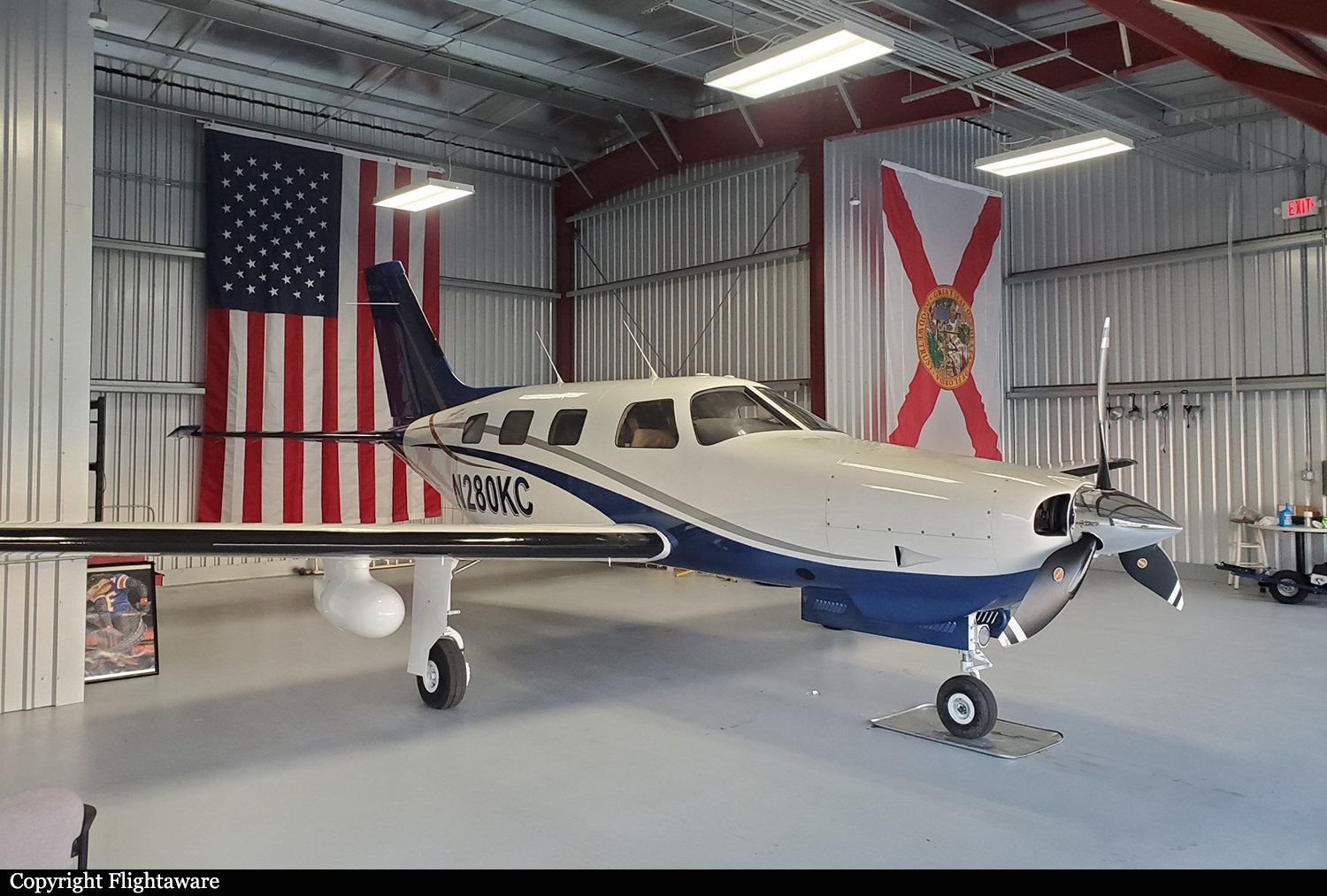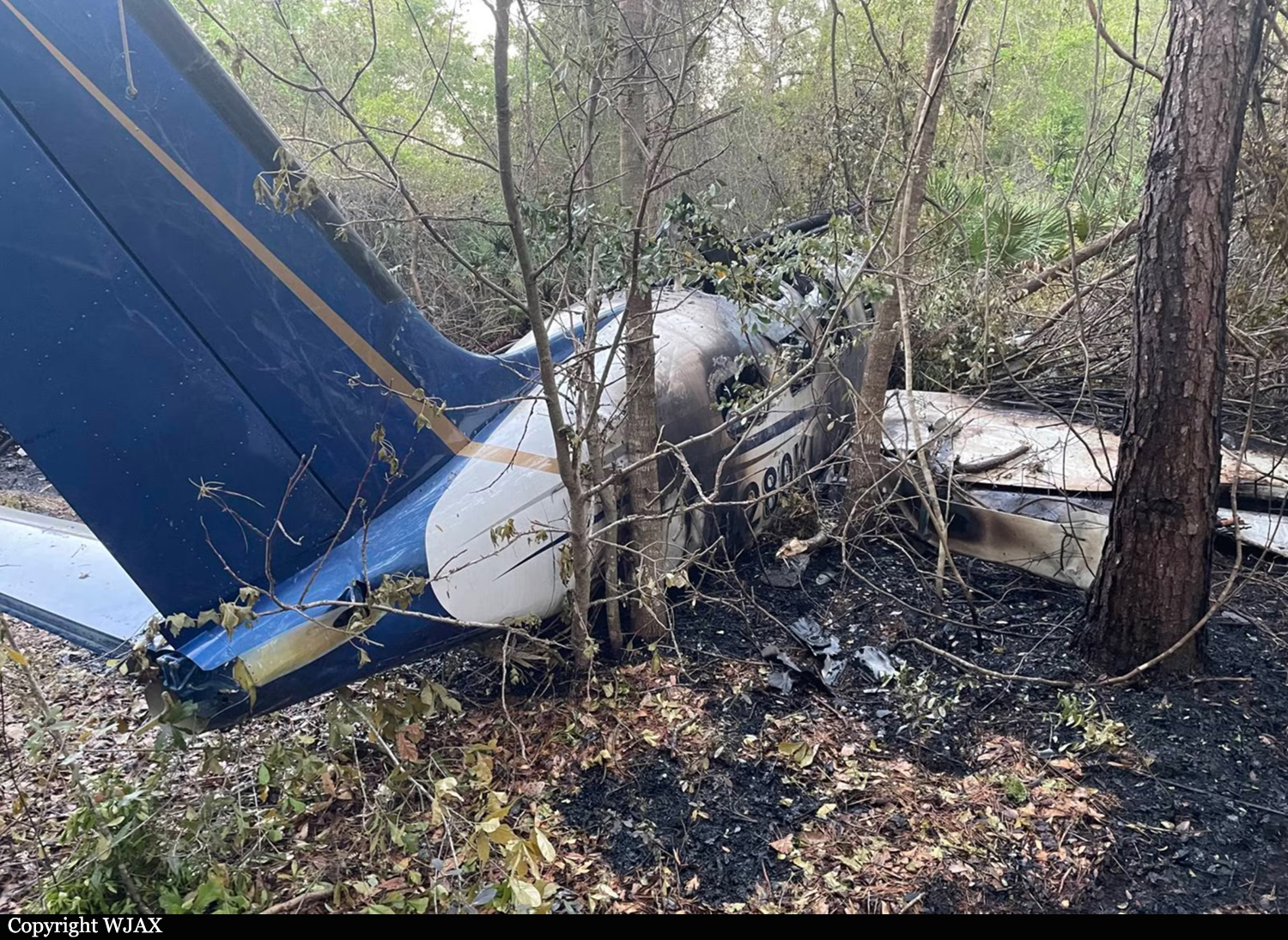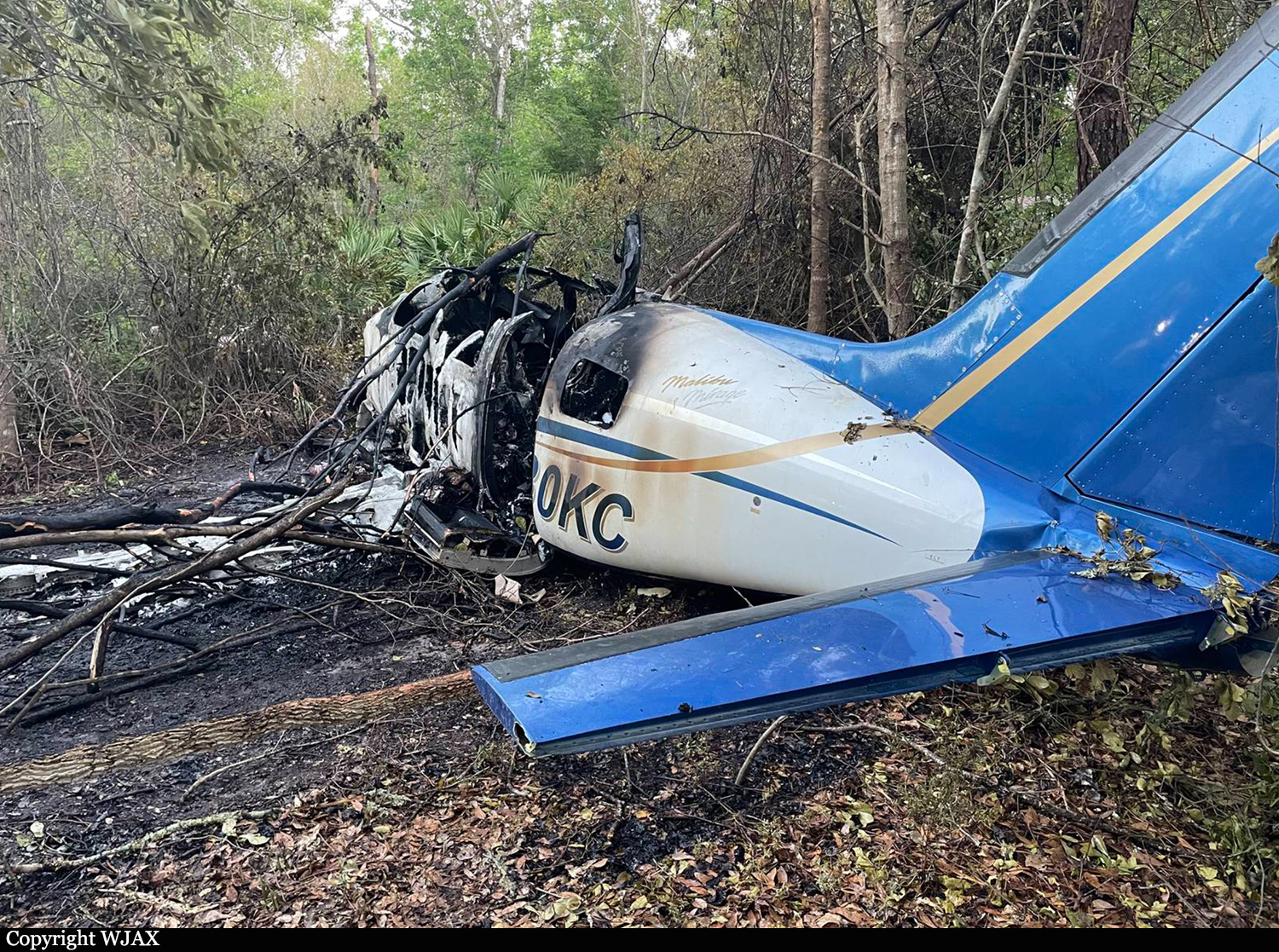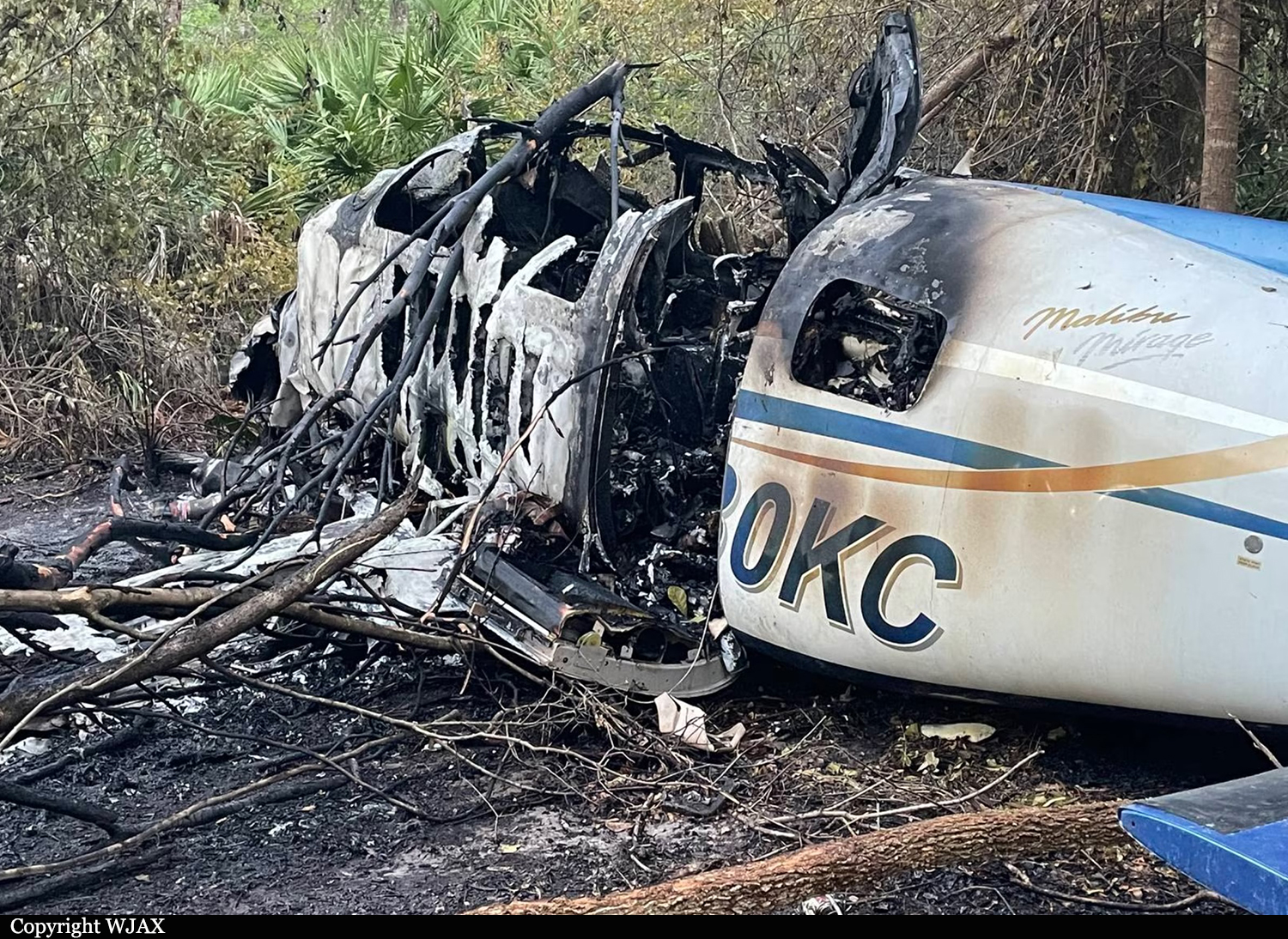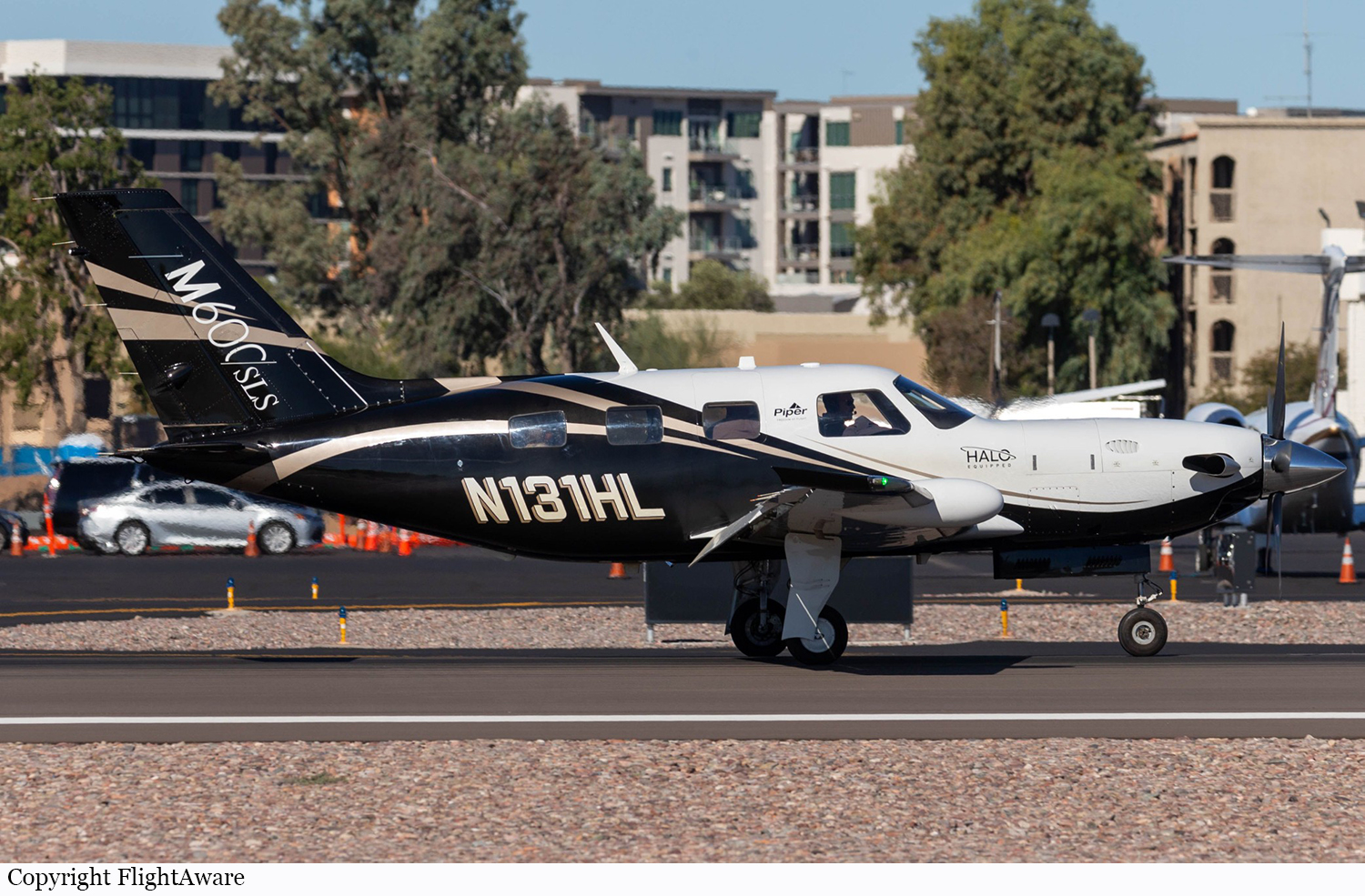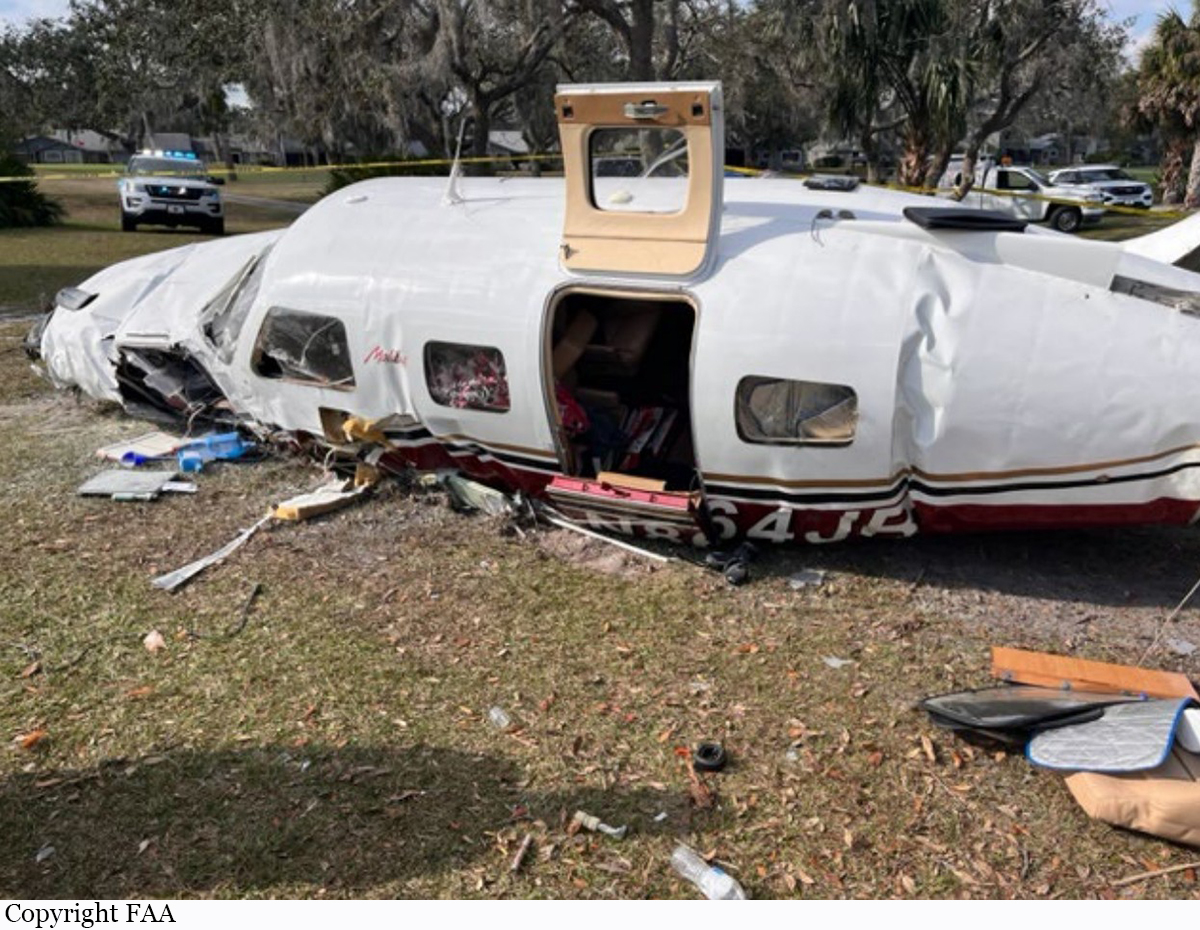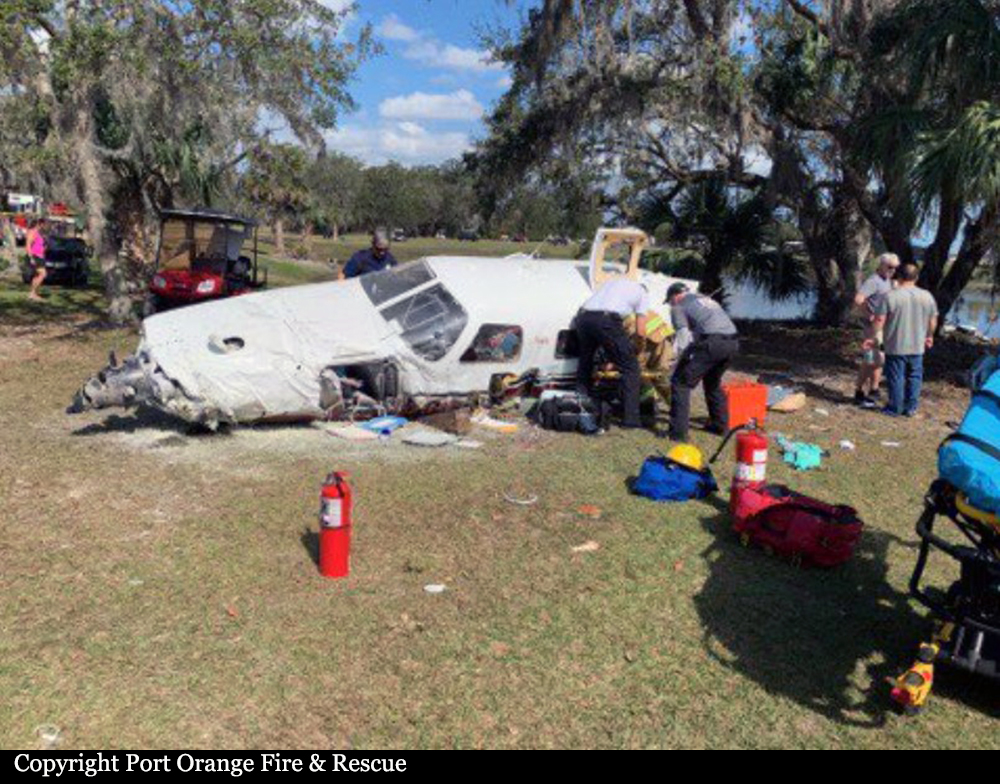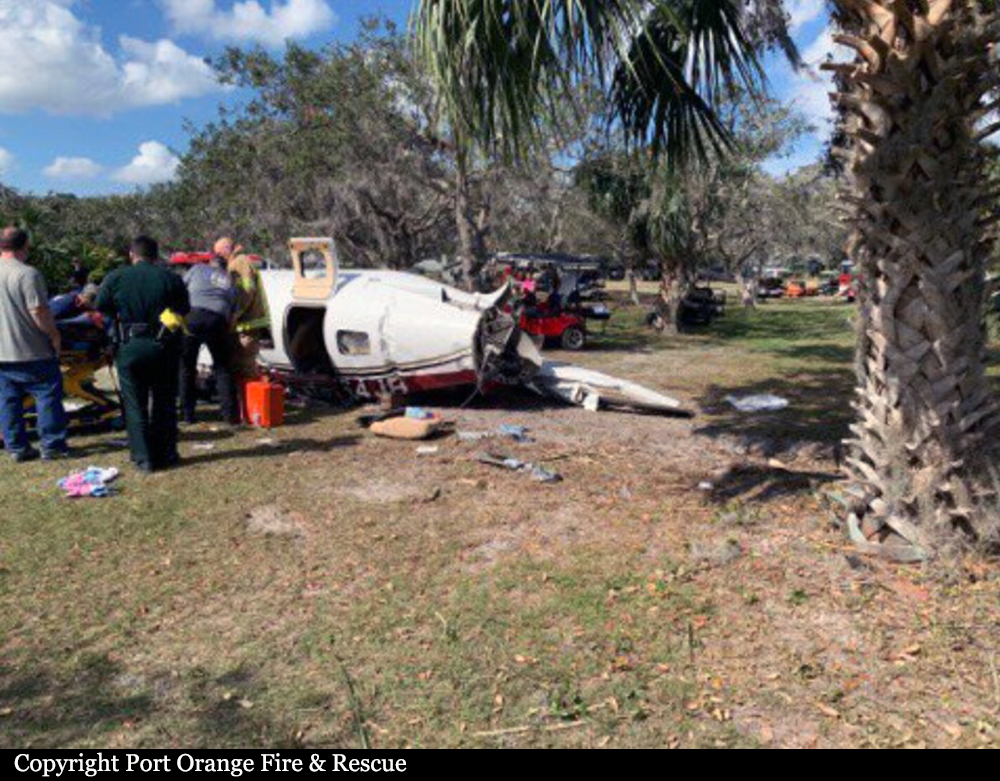Crash of a Piper PA-46-350P Malibu Mirage near Itapeva: 7 killed
Date & Time:
Jan 28, 2024 at 1038 LT
Registration:
PS-MTG
Survivors:
No
Schedule:
Campinas - Belo Horizonte
MSN:
46-36065
YOM:
1996
Crew on board:
1
Crew fatalities:
Pax on board:
6
Pax fatalities:
Other fatalities:
Total fatalities:
7
Circumstances:
The single engine airplane departed Campinas-Campo de Amarais-Prefeito Francisco Amaral Airport on a flight to Belo Horizonte-Pampulha-Carlos Drummond de Andrade Airport. After takeoff, the pilot continued to the east when he apparently encountered adverse weather conditions. The airplane entered an uncontrolled descent, suffered an in-flight breakup, lost a wing and eventually crashed in a prairie located less than 3 km south of Itapeva. The airplane was totally destroyed and all seven occupants were killed.

